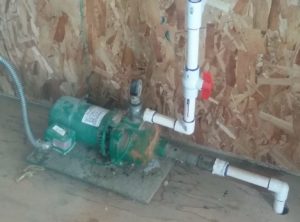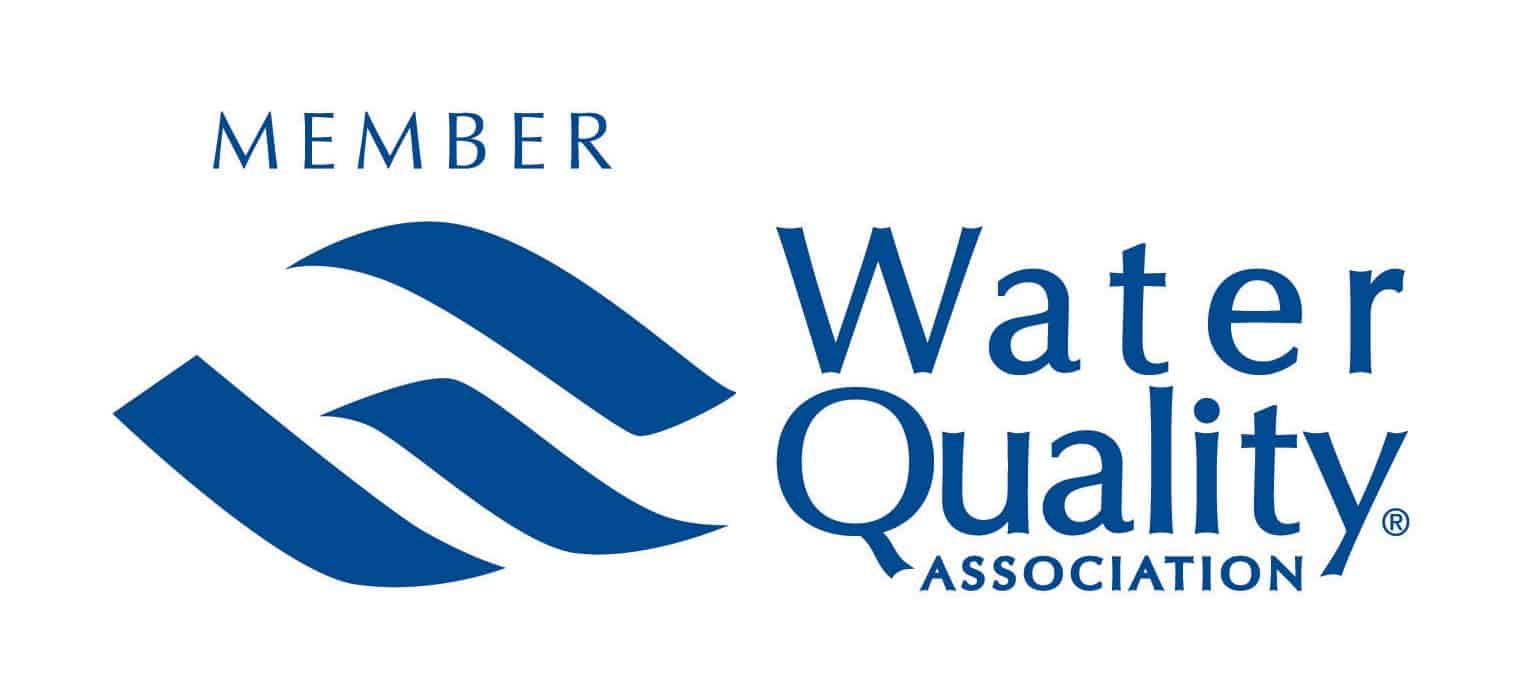Frequently Asked Questions
What kind of well do I have? What’s a pressure tank even do? Where can I get water tested? What’s arsenic?
These are examples of frequently asked questions we hear a lot. We’re happy to help over the phone, so feel free to call, but maybe it’s 1 AM and you’re just curious? Happy reading!
What kind of well do I have?
Drilled wells are constructed with steel or PVC casing, typically 6-IN in diameter (6.5 inches outside dimensions).
Dug wells are typically made of concrete or brick with a steel or concrete lid. Dug wells are common on very old properties or in the northern Snohomish County region, and less common in the greater King County area.

A drilled well on the left and a dug well on the right, the drilled well is 6-IN in diameter, the dug well is 36-IN in diameter.
What is the pressure tank used for?

Drawing of a typical submersible pump installation
A typical well pump system will have an 80 gallon pressure tank with a motor control box and pressure switch at the surface. When the pressure in the tank gets down to a certain point, the pressure switch closes, sends voltage to the control box, and the control box starts the well pump motor. The motor runs until the pressure reaches a certain high point, called the cut out, and the pump shuts off. This process repeats as necessary while you’re using water.
The pressure tank has an diaphragm with well water on one side, and air on the other. The air will compress between well pump cycles and is used to store the pressurized energy the well pump creates. When you open a faucet, the compressed air pushes the water out of the tank to the plumbing system. When the pressure gets low, the pump turns back on and rebuilds it.
Pressure tanks keep the pump from cycling on-off constantly, and allow the pump to properly cool when it does turn on. A well pump should run for a minimum of 1-1/2 to 2 minutes every time it starts, and this is accomplished with a pressure tank. A pressure tank also allows for shock absorption in the system – when valves close, pumps turn on/off, etc there’s hammering effects in the water, since it’s a non-compressible fluid, and the pressure tank will absorb this.
Newer pump systems use variable speed controllers, known as Variable Frequency Drives, or VFD’s for short. VFD’s allow the pump to run as an On Demand type system – the pressure starts to drop, the pump will start to run up to meet the demand. In the last 20 years they have become much more common, have a lot of more advanced features and reliable space saving appliances. VFD’s typically will allow for the use of much smaller pressure tanks than a typical system – 5-10 gallons is common. We still recommend larger tanks on higher flow VFD’s for pump impeller protection purposes.
Pressure tank failure is often the cause of pump failure – as the tank fills with water in the air chamber, the pump cycles shorten, the pump gets hot, and then the motor dies. It takes awhile for this all to happen and can be caught with periodic well checks or maintenance. If you notice sputtering water, air in the lines, the well pump rapid cycling, or any other major changes in the water system, you should call us immediately.
Should I test my water?
Annually checking for bacteria is always a good idea and is recommended by the National Ground Water Association. If you have a dug well, more periodic checks for bacteria should be conducted, or a UV Water Purification system should be installed, as dug wells are highly susceptible to surface water intrusion.
If the well has ever tested positive for Arsenic, periodic checks during different times of the year should be conducted to establish a baseline. An EPA study in Granite Falls has found that some wells will seasonally vary the amount of arsenic in the water quite significantly, while some are very consistent. A series of quarterly checks through the year should do to establish whether your well seasonally varies. If your test results ever exceed 10 parts per billion, we recommend you contact a water systems engineer and have an arsenic filtration system designed.
Where can I get water testing done?
We can collect a sample for you and deliver it to AM Test Laboratories of Kirkland, or Edge Analytical of Burlington, or you can collect your own sample and deliver the sample yourself. The labs do have special bottles that area sterile and sealed for bacteria tests, but inorganic compounds like arsenic can be collected with a rinsed drinking water bottle.
Do I have a Submersible or Jet pump?
A submersible pump is installed down near the bottom of the well, so the only indications of having one are typically that you can’t find it at the surface. A jet pump or centrifugal pump is found at the surface and it pulls water from the well – typically these are only installed on very shallow wells or storage tank systems. Some people have both – a submersible well pump that delivers water to above ground storage, and a jet pump to pull water from storage to deliver it to the house.

An example of an old jet pump system found in some ones well house.
How long does a well pump last?
Generally, 12-15 years for the motor and pump, sometimes longer, and some brands are more reliable than others. Often it depends on water chemistry and the conditions the pump was installed in. We’ve pulled pumps out of wells that were over 60 years old and still operating, but those are definitely the oddity. Most well pumps built after the early 1990’s have been constructed lighter to save energy and reduce costs, and this has reduced their life span.
What maintenance do I need to do to my well pump system?
Typically, pressure tanks should be checked annually for proper inflation pressure in the air diaphragm. The motor controller should be checked for failing capacitor/relays. The motor and wire to the motor should be checked for amperage, motor line-to-line resistance, and wire insulation effectiveness. Some of this work requires sophisticated testing equipment working in high voltage enclosures and should only conducted by qualified individuals. Give us a call and we can take a look at your system and make any adjustments that may be necessary.
My Well Pump Quit – When Can You Fix It?
When a well pump quits and the water stops, it feels like an emergency. We can often re-arrange our schedule to provide same day or next day service to get you back into water.
I haven’t had my well pump system looked at in 20 years, should I?
Absolutely! The best situation for everyone is that we discover a problem with your aging well system before it’s an emergency out of water situation, plan and order the right parts, and schedule the repair when it’s mutually convenient.
Do you have an Operations & Maintenance program or Annual Checkup program?
Not yet, but we’re working on it. If you’re interested in an annual check up program or the like, give us a call.





